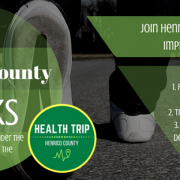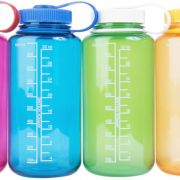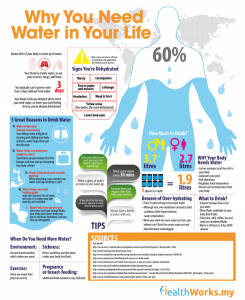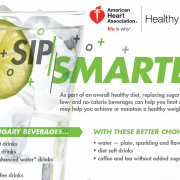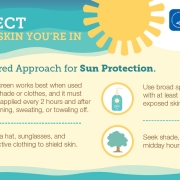Henrico County Walks to Better Health
by Liz Stovall, Division Manager- Fitness and Wellness
Do you know that on average, every minute of walking can extend your life by one and a half to two minutes? The benefits of walking are endless! Not only does it help to prevent chronic diseases, it also gives you more energy, makes you feel good, helps you to relax, reduces stress and assists with weight management. Walking is a great choice for regular, healthy exercise. It is safe AND effective!
To address growing health concerns and to keep our employees in the best health possible, we are launching a new Health Trip initiative. HENRICO COUNTY WALKS is for all County employees to focus on the importance of regular physical activity to maintain physical and emotional well-being. It’s a fact – regular physical activity is essential for good health!
Every nine weeks employee teams will walk toward a new destination city. You can join at any time! The journey begins in Augusta, Maine and heads first to the Big Apple – New York City! To cover the 386-mile distance, employees can form a team of four, where each team member should walk two miles a day, five days a week, to stay on track! This goal makes it easy to achieve 150 minutes of physical activity per week, supporting the American Heart Association’s physical activity goal to reduce the risk of chronic diseases like diabetes and heart disease. For employees who are already physically active and like to jog or run on a regular basis there are options to form a team of three, two or one. These options allow smaller teams to cover the same distance with a greater per week distance to be achieved by each team member.
From New York City, walkers will head to our very own capital city, Richmond. After that, the next stop is Charleston, South Carolina and then on to the final destination city, Orlando, Florida. To assist employees with locating feasible walking routes, the County’s Geographic Information Systems (GIS) office has mapped out walking routes at each County facility, including libraries, parks, schools and general government buildings. These recommended walking routes are available to view on the HENRICO COUNTY WALKS Story Map. This GIS site has several site selection tabs to assist employees in searching for a convenient and safe path close to their work location. Employees can select their work location and the recommended walking route is highlighted on an aerial map. A description of the walking route is provided including the route distance, surface-type, and step-by-step directions on how to navigate the route. Locations that do not have a feasible walking route are given the recommendation to walk at the nearest park. You may preview the HENRICO COUNTY WALKS Story Map today.
Getting started on your HENRICO COUNTY WALKS journey takes a few simple steps and can happen at any point of the journey:
- Form a team.
- Think of a fun team name and officially register by completing the registration form.
- Submit your registration form by September 7th to Liz Stovall.
Before you hit the road, stop by the HENRICO COUNTY WALKS information page on the employee portal for complete program details.

